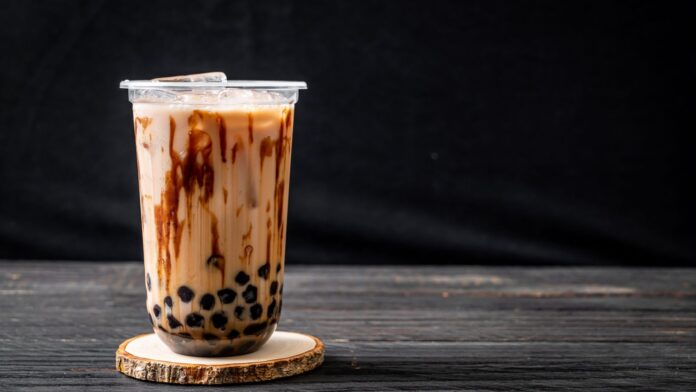Bubble tea, also known as boba or pearl milk tea, is a sweet and refreshing Taiwanese drink that has become a global phenomenon. It’s made by combining tea, milk, sugar, and chewy tapioca pearls, and it’s often served with a fat straw so that you can suck up the pearls along with the drink.
Bubble tea has its roots in Taiwan in the 1980s, and it quickly gained popularity throughout Asia. Today, it’s enjoyed all over the world, and there are thousands of bubble tea shops and franchises offering a wide variety of flavors and toppings.
What makes bubble tea so special is its unique combination of flavors and textures. The chewy tapioca pearls add a fun and satisfying crunch, while the tea and milk create a sweet and creamy base. The result is a drink that’s both comforting and energizing, perfect for any time of day.
There are many different variations of bubble tea, from the classic milk tea with tapioca pearls to fruity teas, slushies, and even smoothies. Some of the most popular flavors include matcha, taro, mango, and strawberry, but there are countless others to choose from.

One of the great things about bubble tea is that it’s highly customizable. You can choose your preferred tea base, add different types of milk, adjust the sweetness level, and even add toppings like fruit, jelly, or even pudding. This means that you can create a drink that’s perfectly tailored to your tastes and preferences.
Another reason why bubble tea is so popular is that it’s easy to make at home. You can buy bubble tea kits online or at Asian grocery stores, which come with everything you need to make your own bubble tea, including the tea, the tapioca pearls, and the syrup. Making bubble tea at home is a fun and budget-friendly way to enjoy your favorite drink.
Whether you’re a bubble tea fan or a newcomer, there’s no denying that this sweet and fizzy drink is here to stay. So why not grab a cup and see what all the fuss is about? You might just fall in love with this delicious and unique drink.

Making bubble tea at home is simple and requires just a few ingredients. Here’s a basic recipe that you can use as a starting point:
Ingredients:
- Black tea or green tea bags
- Sugar
- Milk (dairy or non-dairy)
- Tapioca pearls
- Optional: flavored syrup or fruit puree for sweetness and flavor
Instructions:
- Brew the tea: Boil water and steep the tea bags for 4-5 minutes, depending on the strength you prefer. Remove the tea bags and let the tea cool to room temperature.
- Prepare the tapioca pearls: Cook the tapioca pearls according to the package instructions, typically by boiling them for 10-15 minutes until they’re soft and chewy. Drain and rinse the pearls in cold water.
- Sweeten the tea: In a separate bowl, mix the sugar with the brewed tea until the sugar has dissolved. If you’re using flavored syrup or fruit puree, add it to the tea now and stir until well combined.
- Assemble the bubble tea: Pour the tea mixture into a glass, add the tapioca pearls, and add the milk. You can use any ratio of tea, milk, and sugar that you prefer, depending on your personal taste.
- Serve and enjoy: Stir the bubble tea to distribute the tapioca pearls evenly and serve over ice. You can use a wide straw to suck up the pearls as you drink.
Note: You can also add ice to the glass before adding the tea mixture for a cold and refreshing drink.
This is just a basic recipe, and you can feel free to adjust the ingredients and ratios to suit your tastes. Experiment with different types of tea, milks, and flavors to find your perfect bubble tea combination. Enjoy!
Discover more from SNAP TASTE
Subscribe to get the latest posts sent to your email.



